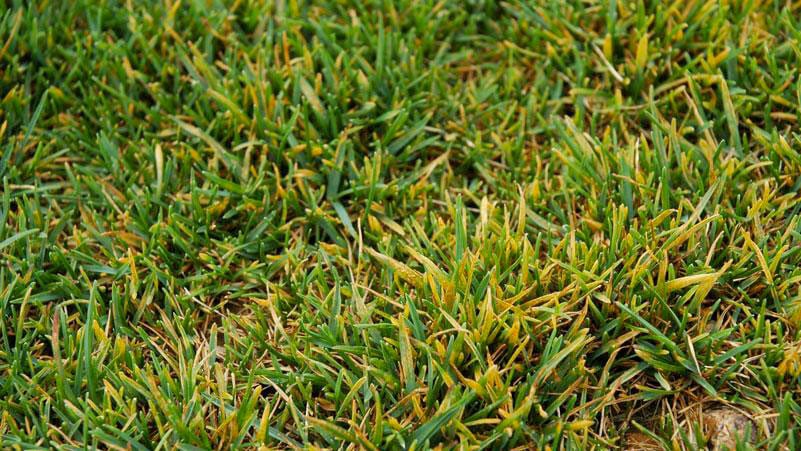Grass, bushes, and trees are all susceptible to the rust fungus.
Spots of orange or yellow color often emerge on grass blades that have been infected by this common lawn fungus.
Despite its benign effects on humans, many pet owners worry about its potential side effects on their canine companions.
That’s because dog stir up the spores of this fungus when they’re outside on the grass.
Thankfully, dogs are safe from rust fungus.
This article we’ll dig deeper into rust fungus and its effects on dogs, as well as what dog owners must know about this issue.
What Is Rust Fungus?

Rust fungus is a type of plant disease that is caused by a group of fungi known as Puccinialesi.
It produces bright yellow, orange, or red pustules on the leaves and blades of affected plants.
The most common species are Puccinia coronata, Puccinia poarum, and Pucciniastrum goeppertianum.
This fungus is most active in warm, moist conditions and is particularly prevalent in areas with high humidity.
Grasses Affected Most Affected By Lawn Rust
Here’s a quick look at the types of grass that tend to have the most problems with rust fungus.
- Perennial Ryegrass (Most Common)
- Kentucky Bluegrass
- Tall & Fine Fescues
- Zoysiagrass
- Bermudagrass
While these aren’t the only grasses that are prone to lawn rust, these are the most common to be affected by it.
Is Rust Fungus Dangerous To Dogs?
While it may look scary, rust fungus actually poses no threat to your dog or your family.
However, rust fungus can be dangerous under some circumstances.
If your dog ate a lot of grass clippings or leaves that were infected with rust fungus, it could develop stomach issues including vomiting and diarrhea.
A dog with a compromised immune system that comes into contact with contaminated plant material also runs the danger of contracting the infection from the spores produced by the fungus.
Consequently, before letting your pet back into the yard, you should always remove any clippings that could harbor rust fungus.
It’s also worth noting that grass weakened by rust fungus is more prone to damage or even death.
This can lead to bare spots in your lawn that could be harmful to your dog if he or she were to run or play on them.
How To Prevent Rust Fungus Infection In Your Grass
There are several steps pet owners can take to prevent rust fungus infection in their lawns and gardens:
- Maintain proper lawn care: Regular watering, mowing, and fertilization can help prevent rust fungus from taking hold.
- Avoid over-watering: Over-watering can encourage the growth of rust fungus. It’s best to water your lawn in the early morning so that the grass has a chance to dry out before nightfall.
- Use fungicides: Fungicides are available to control rust fungus and can be applied to the lawn. However, it’s important to carefully read and follow the instructions on the label to avoid exposing your dog to harmful chemicals.
Additionally, be sure to raise the height of cut and take care to manage the soil to avoid compaction.
When grasses are under stress from a lack of light, poor soil, inappropriate watering, or a lack of nutrients, lawn rust is more likely to appear.
Thatch (dead grass and other debris) accumulation in the lawn can also lead to the rust fungus’s development by providing a damp environment for it to thrive in.
This means that keeping a neat and well-kept lawn is the most effective method of prevention.
To stay proactive, make sure you’re giving the lawn an appropriate amount of water, fertilizer, and mowing it regularly.
If you already have a bad rust fungus problem, then you may need to consider a fungicide.
Though fungicides are commonly not used to control this disease if proper plant health practices are being done.
However, if a severe rust outbreak exists on a healthy turf stand, two fungicide families, DMIs and Strobilurins, are the most effective in suppressing the disease.
Remember to follow application rates and make sure the fungicide is labeled for your area of application (i.e. residential lawn or golf course).
Below are a few of the effective fungicides for rust.
Post infection applications often are slow to reduce the disease and multiple application may be required.
Preventative applications are much more effective.
- Rubigan
- Eagle
- Bayleton
- Heritage
- Compass
- Insignia
Final Word
As you can see, contact with contaminated plant material or ingestion of infected material does not provide a significant risk to canines.
However, you should always remove any cuttings that may harbor the pathogen before bringing your pet back outside in the yard, and you should keep your pet clear of locations where rust fungus is known to be present.
If you follow these easy precautions, your dog will be safe from this common lawn disease.
